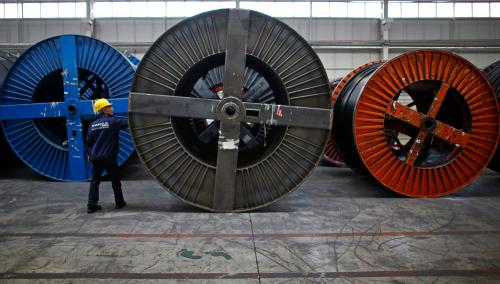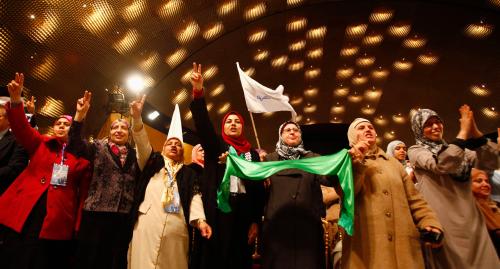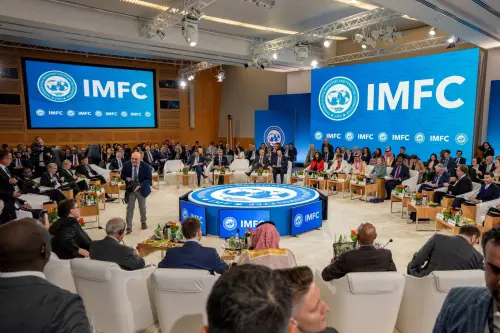The destinies of people in the Middle East and North Africa are shaped more by accidents of where they were born than in any other part of the world (Figure 1). This is considered a problem by governments in the region, and it should be. They have tried many ways to respond to the needs of people in lagging areas; much money has been spent on investment in these places. Thus, to add jobs in poorer areas, policymakers have tried to strong-arm new production facilities into these areas. To meet the need for decent homes and amenities in poor urban neighborhoods, money has been poured into massive housing projects.
Even so, spatial disparities continue to grow, or are closing more slowly than would be expected given the volume of investment directed to these locations. The main reason: the causes of spatial exclusion are not locational and physical but are economic and institutional.
Figure 1: With a few exceptions such as Jordan, spatial inequality is higher in MENA
Why is MENA so fragmented?
Why is territorial convergence so difficult? In a report that we just completed at the World Bank, we identified four reasons.
- Most lagging areas in MENA have not been able to leverage the full returns to their endowments because the business environment and infrastructure in their cities and towns makes it hard for new firms to start and grow (Figure 2). One reason is that outside the capital city in MENA countries, smaller cities invariably lack the authority to raise their own revenues and to manage local service provision.
- Most residents in lagging areas are “stuck in place,” unable to take full advantage of jobs that more vibrant urban economies offer. Credentialist education systems may be most to blame for making people immobile.
- In leading areas, rigid and outdated regulations distort land markets and stymie development. For example, regulations in Tunisia prohibit residential buildings more than three stories high, and regulations in Jordan impose a minimum lot size of 100 square meters—restricting the supply of affordable formal housing.
- MENA’s governments have created formidable obstacles to trade and migration. The main barriers are limits on news and information and practical constraints on travel and trade (visa difficulties, weak infrastructure, logistics hurdles).
Figure 2: It’s tough for firms outside MENA’s capital cities
Notice that while they result in spatial inequalities of opportunity, the reasons for fragmentation are not themselves spatial.
Engineering a Convergence Machine
Increasing the pace of integration and convergence will require fixing these problems. Governments in the region can reduce territorial disparities quickly and effectively by doing five things:
- Strengthen coordination and complementarities across initiatives. Development strategies are more likely to succeed if they are multidimensional, including access to energy, transport, land, and markets—in the same place, whether sequentially or concurrently. A good place to start is by anchoring investments in and around cities. Complementary reforms that help get the prices right—for energy and for land—can go a long way in creating the conditions for job creation in lagging areas. The good news is that governments don’t have to pay more to see better results, because spatial coordination will generate cost savings in the medium to longer term.
- Redistribute roles and responsibilities across tiers of government. Citizens in different parts of the country have varying needs, and local conditions require flexible service delivery models. Redistributing responsibilities for local revenue generation and local service provision to local governments can make them better equipped and more accountable.
- Enable mobility of people between lagging and leading areas. On average, people in MENA are half as mobile domestically as people in other parts of the world (Figure 3). Our research shows that living standards of people moving internally to major cities can increase by an average of 37 percent in the region. Women are more likely to move and find jobs in urban areas, but they need support to do so. Education systems across the region need to be reoriented toward marketable skills.
- Build dense and connected cities. Well-functioning cities offer a wide variety of jobs—for women and men. Making land markets in cities more efficient is critical for agglomeration and specialization—two dynamics that enhance job creation and economic prosperity. Whether in larger or in smaller (secondary) cities, agglomeration and specialization require the benefits from high economic density, which concentrates economic activity geographically. For this, the fabric of cities needs to be spatially connected, dense with people, and transit-oriented—not sprawling that perpetuates the dispersion of people and jobs. Planners and regulators can attract firms to invest in cities by reducing frictions such as zoning regulations, impediments to property acquisition and new construction (costs, height limits, density limits), challenges to local business registration and licensing, limits on news and information, and obstacles to developing local business networks.
- Enhance market access nationally and regionally. Historically, MENA’s cities were part of economically important global trade networks. Many of these cities persisted into modern times as large urban areas. But governments in the region have managed to shrink the networks from global to local. These networks have, at a minimum, to be expanded to national and regional dimensions. A good place to start would be to improve the links across national borders—reducing tariffs, improving logistics, and facilitating trade, and instituting migration protocols. Such efforts will grow the economies, providing much-needed resources to redistribute in areas left behind.
Figure 3: Just 14 percent of MENA’s people have left their place of birth, compared with 28 percent in countries elsewhere
In other words, MENA’s governments have to start putting together a modern convergence machine. The main parts of the machine are institutions that integrate and infrastructure that connects. MENA is no longer a poor place: Last year, the region’s GDP per capita was nearly $7,000 placing it comfortably in upper middle-income levels. Its people should have access to quality basic services such as education, clinics, sanitation, and public security. Well-chosen infrastructure initiatives—roads, railways, ports and communication facilities—can provide its entrepreneurs access to the region’s sizeable markets (the region’s GDP is $3 trillion) and even bigger nearby markets to MENA’s north and east. Spatially targeted interventions might also be needed, but they are not the main components of the machine.
Perhaps the biggest mistake that governments have been making is to regard these interventions—programs to push economic activity into lagging areas while simultaneously favoring capital cities—as the mainstay of the machine. It’s time to stop these self-defeating measures that exacerbate fragmentation in MENA, and speed up efforts to engineer integration.











Commentary
5 steps to reshape economic geography and rejuvenate the Middle East and North Africa
September 20, 2019